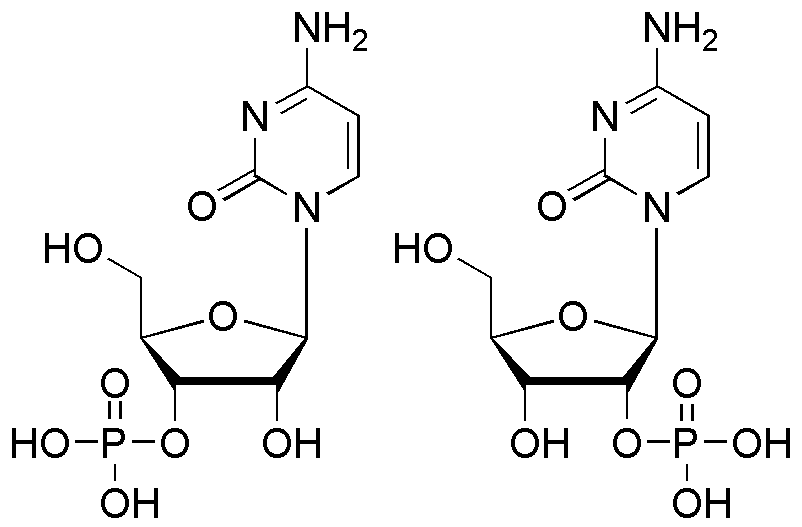Cytidine-2'(&3')-monophosphate is widely utilized in research focused on:
- Biochemical Research: It serves as a building block for RNA synthesis, making it essential in studies related to gene expression and molecular biology.
- Pharmaceutical Development: This compound is crucial in the development of antiviral and anticancer drugs, as it can influence cellular metabolism and signaling pathways.
- Neuroscience: It plays a role in neuroprotective studies, helping researchers understand its effects on neuronal health and potential treatments for neurodegenerative diseases.
- Diagnostic Applications: Used in assays to detect RNA levels, aiding in the diagnosis of various diseases and monitoring therapeutic responses.
- Food Industry: It is explored for its potential as a food additive to enhance nutritional profiles, particularly in functional foods aimed at improving cognitive health.
General Information
Properties
Safety and Regulations
Applications
Cytidine-2'(&3')-monophosphate is widely utilized in research focused on:
- Biochemical Research: It serves as a building block for RNA synthesis, making it essential in studies related to gene expression and molecular biology.
- Pharmaceutical Development: This compound is crucial in the development of antiviral and anticancer drugs, as it can influence cellular metabolism and signaling pathways.
- Neuroscience: It plays a role in neuroprotective studies, helping researchers understand its effects on neuronal health and potential treatments for neurodegenerative diseases.
- Diagnostic Applications: Used in assays to detect RNA levels, aiding in the diagnosis of various diseases and monitoring therapeutic responses.
- Food Industry: It is explored for its potential as a food additive to enhance nutritional profiles, particularly in functional foods aimed at improving cognitive health.
Documents
Safety Data Sheets (SDS)
The SDS provides comprehensive safety information on handling, storage, and disposal of the product.
Product Specification (PS)
The PS provides a comprehensive breakdown of the product’s properties, including chemical composition, physical state, purity, and storage requirements. It also details acceptable quality ranges and the product's intended applications.
Certificates of Analysis (COA)
Search for Certificates of Analysis (COA) by entering the products Lot Number. Lot and Batch Numbers can be found on a product’s label following the words ‘Lot’ or ‘Batch’.
*Catalog Number
*Lot Number
Certificates Of Origin (COO)
This COO confirms the country where the product was manufactured, and also details the materials and components used in it and whether it is derived from natural, synthetic, or other specific sources. This certificate may be required for customs, trade, and regulatory compliance.
*Catalog Number
*Lot Number
Safety Data Sheets (SDS)
The SDS provides comprehensive safety information on handling, storage, and disposal of the product.
DownloadProduct Specification (PS)
The PS provides a comprehensive breakdown of the product’s properties, including chemical composition, physical state, purity, and storage requirements. It also details acceptable quality ranges and the product's intended applications.
DownloadCertificates of Analysis (COA)
Search for Certificates of Analysis (COA) by entering the products Lot Number. Lot and Batch Numbers can be found on a product’s label following the words ‘Lot’ or ‘Batch’.
*Catalog Number
*Lot Number
Certificates Of Origin (COO)
This COO confirms the country where the product was manufactured, and also details the materials and components used in it and whether it is derived from natural, synthetic, or other specific sources. This certificate may be required for customs, trade, and regulatory compliance.


